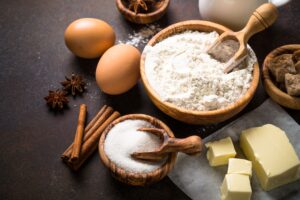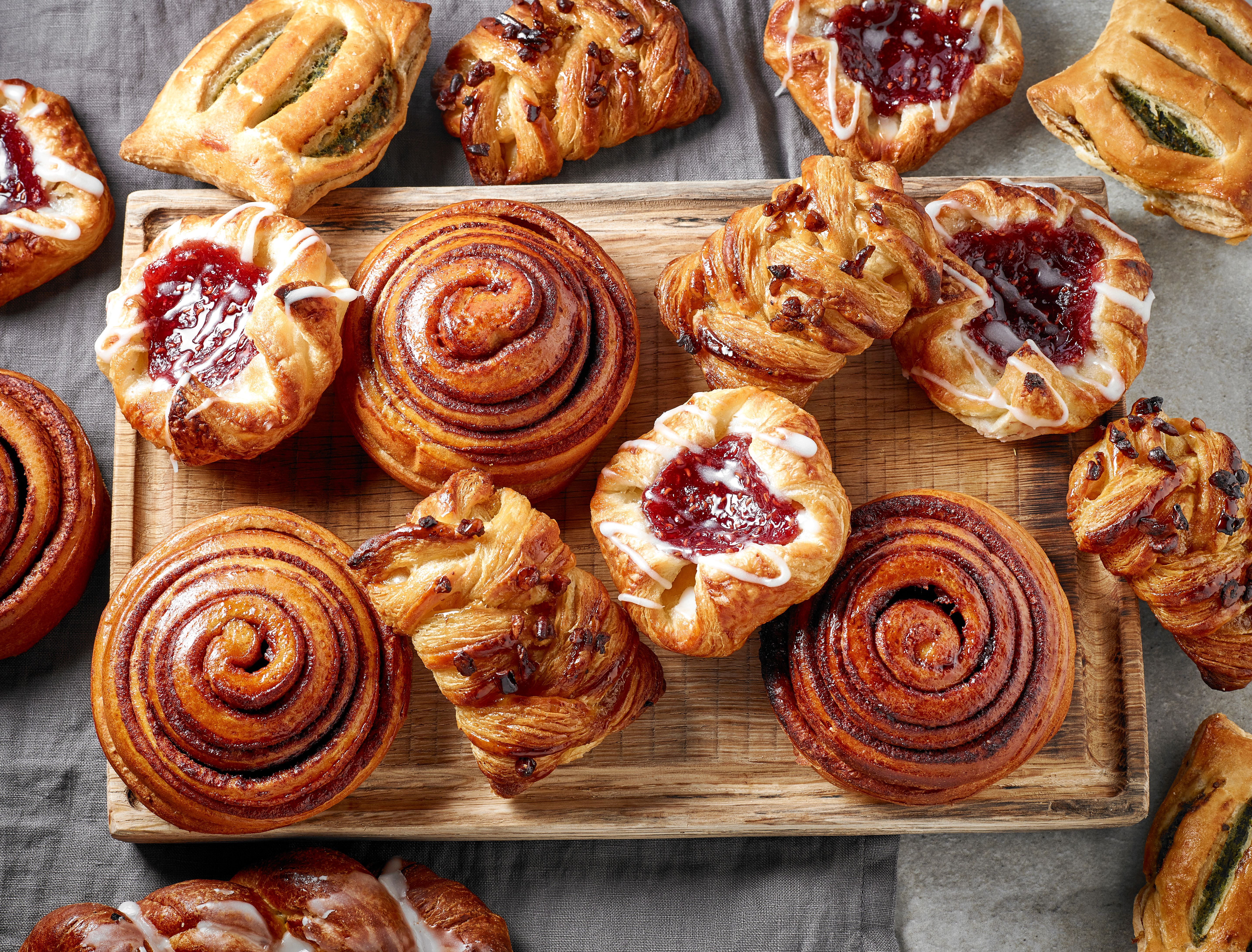Creating craveable flavors for baked goods isn’t always easy. In this blog, culinologist Brian Duffy explains some of the most common challenges when it comes to formulating seasonings for baked goods—and how Fuchs can help baked good brands overcome these challenges with our custom seasoning solutions.
Here at Fuchs North America, our R&D team has a wide variety of skillsets, which allows us to formulate flavor systems for all sorts of applications. We make seasonings for products ranging from snacks and beverages to meats and confections.
 What makes baked goods so challenging to formulate for? First of all, seasonings for baked goods have many considerations. We need to think about how a flavor profile will express within each unique baking system and process. We need to consider the pH and sugar content of the seasoning we make and how it will affect the baked system. We can also consider any functionality the customer may want to add through the seasoning.
What makes baked goods so challenging to formulate for? First of all, seasonings for baked goods have many considerations. We need to think about how a flavor profile will express within each unique baking system and process. We need to consider the pH and sugar content of the seasoning we make and how it will affect the baked system. We can also consider any functionality the customer may want to add through the seasoning.
Baked goods are complex systems that often include varying levels of flour, sugar, fat, egg, chemical leavening, and more. Each of these ingredients have their own flavor or effect on flavor that can muddle the profile of the seasoning. In a cookie, for example, we have a high fat system with lots of flour, and we can be sure to use fat soluble flavors to best incorporate into our butter or shortening to better express the flavor. However, we also need to be able to punch through the flavor of the flour, so we’ll need to ensure that we increase our spices and flavor to such a level that we end up with a balanced profile throughout the whole chew of the cookie.
Whether the seasoning is meant to be external, such as an herb blend on a focaccia or an everything blend on top of a bagel, or internal, like a cinnamon swirl or a flavoring to a bread, it’s important to consider how the product will ultimately be cooked. When a seasoning is applied to the top of a baked good, it is better to have larger, minimally treated particulates that can better survive the cooking process. This will cause a flavor change to lean more into toasted notes, while avoiding burning which you might see in a powdered coating. When considering internal seasonings, we need to ensure that our seasonings are potent enough to cut through the flavors inherent to the baked good. This will entail using ground spice for better incorporation, but possibly bolstering our profile with flavors.
Baking usually involves high temperatures, and flavors are very sensitive to this. So, knowing at what temperature and how long a baked good will be cooked will inform how flavors should be used. For something like a cookie, which is cooked for a shorter period of time, a liquid flavor may get you to where you need to be. For products made at high temperatures and with longer cook times, such as a cake, we do not want our volatile flavors dissipating during the bake. Spray dried and encapsulated flavors can provide the protection that we need to preserve our flavor throughout the baking process.
be used. For something like a cookie, which is cooked for a shorter period of time, a liquid flavor may get you to where you need to be. For products made at high temperatures and with longer cook times, such as a cake, we do not want our volatile flavors dissipating during the bake. Spray dried and encapsulated flavors can provide the protection that we need to preserve our flavor throughout the baking process.
Customers turn to us for many different flavor profiles, some of which can be sweet and acidic. For example, if a customer wanted to develop a honey mustard flavored biscuit, we would need to be cognizant of sugar content and acid that we add to the blend. Sugar can act as a liquefier in baked goods. This will make a softer baked good and condense the grain. Many baked goods rely on chemical leaveners, like sodium bi carbonate and sodium aluminum phosphate, for example. These leaveners will react with acids within the blend during the cooking process to create gasses that are responsible for rising. Adding too much acid with a seasoning can interfere with this process and create less than ideal results.
In addition to flavoring baked goods, Fuchs can even add functional ingredients, such as hydrocolloids like guar gum and xanthan gum, to modulate moisture retention, affect the crumb structure, and increase shelf life. We can also add ingredients such as lecithin and mono- and di-glycerides to increase stability and reduce starch retrogradation, increasing shelf life. These ingredients can also be used to cut costs in the face of supply chain challenges. For example, when used in conjunction, these ingredients can reduce the usage of eggs needed in a cake in a time when the supply chain is struggling to keep up, like during the recent avian flu.
At Fuchs, our chefs and food scientists work directly with our customers throughout the product development cycle to build custom seasonings that fit both flavor and functional needs. Bring us your seasoning challenges for baked goods and beyond. Our experts are here to help. Contact us today to get started.
About the Author
 Brian graduated in 2014 from the Culinary Institute of America where he received his associate degree in culinary arts and his bachelor’s degree in culinary science and has been at Fuchs North America for just over 4 years. His passion is bringing the culinary arts and food science together to bring new food experiences to our customers.
Brian graduated in 2014 from the Culinary Institute of America where he received his associate degree in culinary arts and his bachelor’s degree in culinary science and has been at Fuchs North America for just over 4 years. His passion is bringing the culinary arts and food science together to bring new food experiences to our customers.


